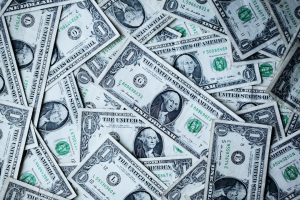Forex, or foreign exchange, is the exchange of one currency for another at an agreed exchange rate. It is the largest financial market in the world, with an average daily trading volume of over $5 trillion. Forex trading can be done by individuals, corporations, and governments, and it is open 24 hours a day, five days a week.
The forex market is decentralized, meaning there is no central exchange or clearinghouse. Instead, transactions are conducted electronically over the counter (OTC), through a network of banks, brokers, and other financial institutions. This means that the forex market is highly liquid, as there are always buyers and sellers willing to trade currencies.
Forex trading involves speculating on the value of one currency against another. For example, if a trader believes that the Euro will appreciate in value against the US dollar, they may buy Euros with dollars. If the Euro does indeed appreciate, the trader can then sell the Euros back for more dollars than they originally paid, making a profit.
There are a variety of factors that can impact currency exchange rates, including economic indicators, political events, and natural disasters. For example, if a country’s economy is performing well, its currency may strengthen against others. Additionally, political instability or natural disasters can lead to currency fluctuations.
Forex trading can be done through a variety of platforms, including desktop software, web-based platforms, and mobile apps. These platforms allow traders to monitor market conditions, execute trades, and manage their accounts.
While forex trading can be lucrative, it is also high-risk. The market is volatile and unpredictable, and it can be difficult to accurately predict currency exchange rates. Traders should always be aware of the risks involved and only trade with money they can afford to lose.
There are also a variety of strategies and techniques that traders can use to increase their chances of success. These include technical analysis, fundamental analysis, and risk management.
Technical analysis involves using charts and other tools to identify patterns and trends in market data. Fundamental analysis involves examining economic and political factors that may impact currency exchange rates. Risk management involves setting stop-loss orders and other safeguards to limit losses.
In conclusion, forex trading involves exchanging one currency for another in order to speculate on their relative values. It is the largest financial market in the world, with an average daily trading volume of over $5 trillion. While forex trading can be lucrative, it is also high-risk and traders should always be aware of the risks involved. There are a variety of strategies and techniques that traders can use to increase their chances of success, including technical analysis, fundamental analysis, and risk management.





